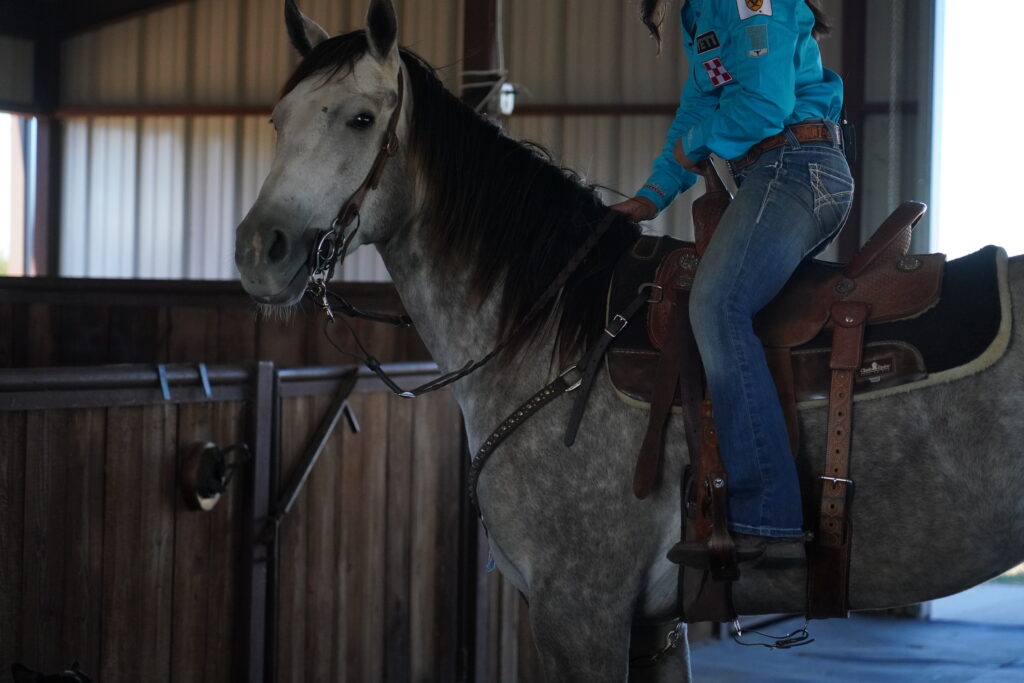I’ve taught lessons and schools on barrel racing and horsemanship for over 20 years, and in that time I’ve always taught students how to best fit their tack and gear to themselves and their horses.
But I gained a new appreciation for how to help children, specifically, after having my own and teaching them and their friends to ride. There are so many challenges (and exciting opportunities!) when your kids start riding, that sometimes it’s easy to get overwhelmed.
One area that’s within our control is the gear we use for our kids and their horses. In this article, I’ll go over four items—bit severity, saddle size, stirrup length, and rein length—that parents can control to help their kids ride better, no matter their discipline.
Bit Severity
Perhaps the most common mistake I see parents making with their children’s riding is in the bit department. The common misconception is that if you give a child a larger bit, say something with a port or longer shank, the child will get heavy handed and ruin the horse’s mouth.
But I believe that’s backward. We’re teaching our children muscle memory as they learn to ride, and if they have a light bit in their horse’s mouth, then they’ll learn to pull hard to compensate. That will create heavy-handed kids before they ever learn any different.
I want my kids riding in bits that get a response with the least amount of pressure. That will help them develop feel and muscle memory for the rest of their lives.
@ridetvgo How much do you know about the bits you are using while #BarrelRacing ?Link in bio for a #bit playlist from #NFR qualifiers. #RodeoTok #HorseTok #AQHA
♬ original sound – Ride TV
Saddle Size
Most parents are getting with it more and more, but I still see kids in saddles that are too big for them at a lot of clinics and junior rodeos. Riding with too big a seat will sit kids (or anyone!) too far back on their pockets, knocking them out of balance. I like to see riders’ feet in line with their shoulders, and it takes a small enough seat to do that. When sitting in a saddle, the seat and cantle should put your butt over your feet, with your shoulders, hips and heels in line.

Stirrup Length
When riders stand flat-footed in the stirrups—not with their toes down—we want their feet flat like they’re standing on the ground for the most balance. If you can’t stand up really well, and your feet go behind you, your stirrups are too long.

Judge proper stirrup length by taking your fist vertically between the rider and the seat, insuring three to four inches in between when he or she stands up in the stirrups. Longer riders will get longer stirrups because generally, they ride more with their calves. Shorter riders need shorter stirrups, too, because of how they need to balance in the saddle. For example, the widest part of the horse’s barrel is right where my calves hit them. So I can’t get my legs underneath the widest part of the horse. Shorter people—including a lot of young kids—will need their stirrups shorter because they rely on the swells of their saddles more than a longer-legged rider.
8 Keys to Raising an 8-Year-Old Barrel Racing Phenom, Part I
Rein Length
When the reins come past the saddle horn, your kid loses any strength in their arms, elbows, or wrists. A rider has the most strength with their arms in front of them. When I see kids’ hands at their shoulders or even farther back, they have no strength, and it throws them off balance. That puts riders in a bind. Ideally, kid’s reins should be two-to-four inches in front of the saddle horn. If the reins come past the saddle horn, your equipment is too long for proper control.

Originally published in Horse & Rider, August 6, 2019





